Apple’s new high-end San Francisco store is a glimpse into the future
With the opening of its new San Francisco flagship location, Apple gives us a glimpse of its future: A hybrid of technology and fashion.
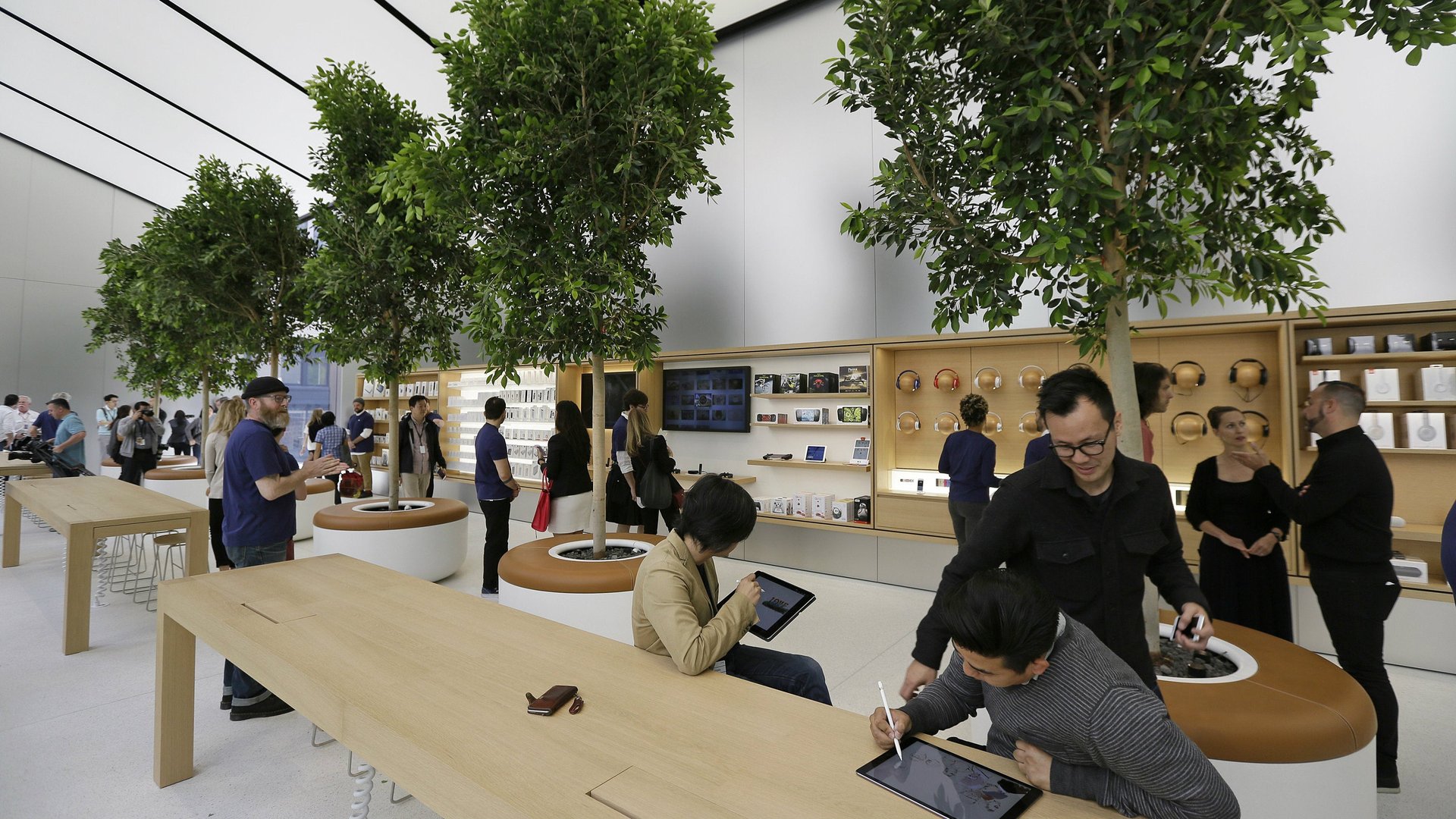

With the opening of its new San Francisco flagship location, Apple gives us a glimpse of its future: A hybrid of technology and fashion.
Two weeks ago, on May 14, Brigitte and I wandered over to Union Square in San Francisco to check on the progress of the newest Apple Store. The construction site was messy, as expected, but unusually busy for a Saturday. With all that overtime pay, this project is clearly on a tight schedule. Apple’s yearly app developer confab, WWDC, is just four weeks away; I conjectured that the company plans to hold a grand sis-boom-bah opening while its software partners are in town.
Wrong. The grand opening takes place exactly one week later, on May 21st. (Unable to believe it could take just a week to finish the job, my brain “sees” June 21st when I read the announcement.)
On opening day we return. My better-half, the A-to-Z house designer/builder, supply-chain manager, and contractor-driver, whips out her tape measure and checks the thickness of the steel hand rail, drums her fingers on the table tops (a slightly darker wood than in other stores, she notices; mostly solid, some veneer), and tests the give of the fauve leather on the unorthodox “seating planters” inside the building:
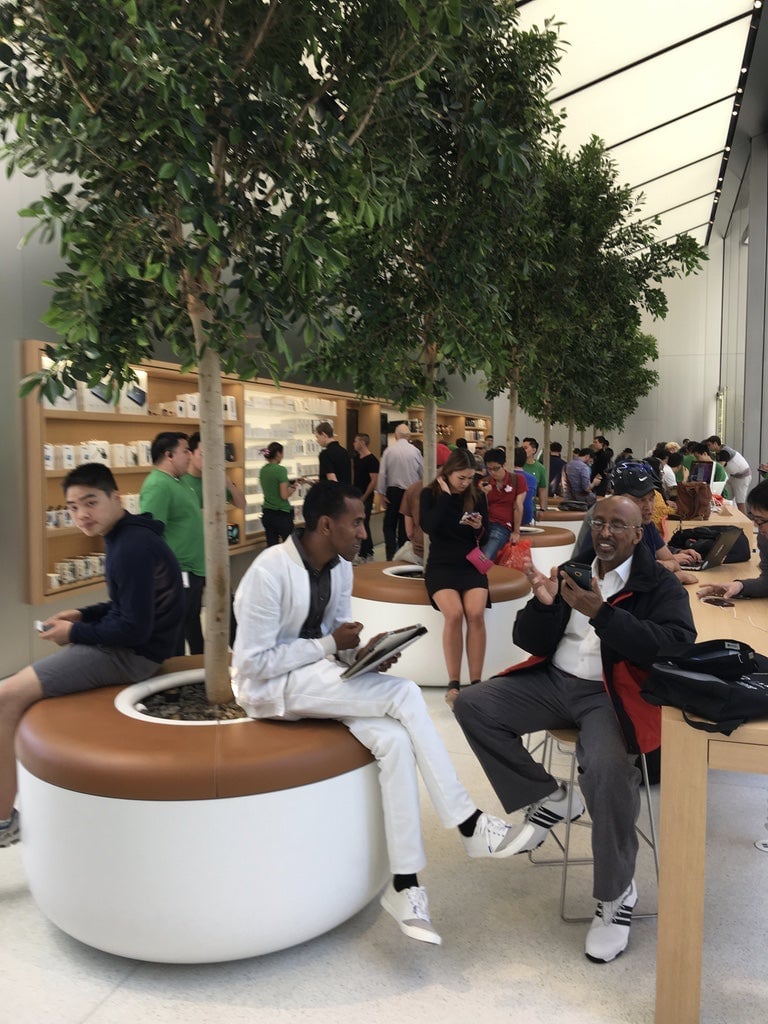
She approves of the overall design and attention to detail.
Her lesser-half likes the huge 42’ high sliding doors and the second floor view it gives of Union Square…
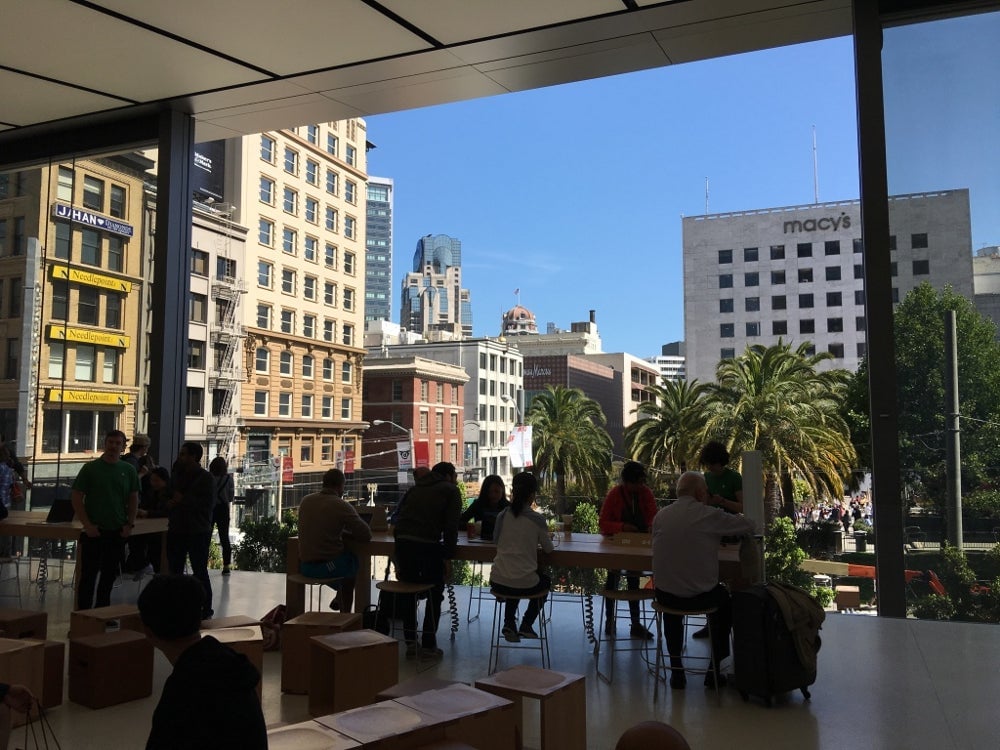
…the enormous 37’ screen…
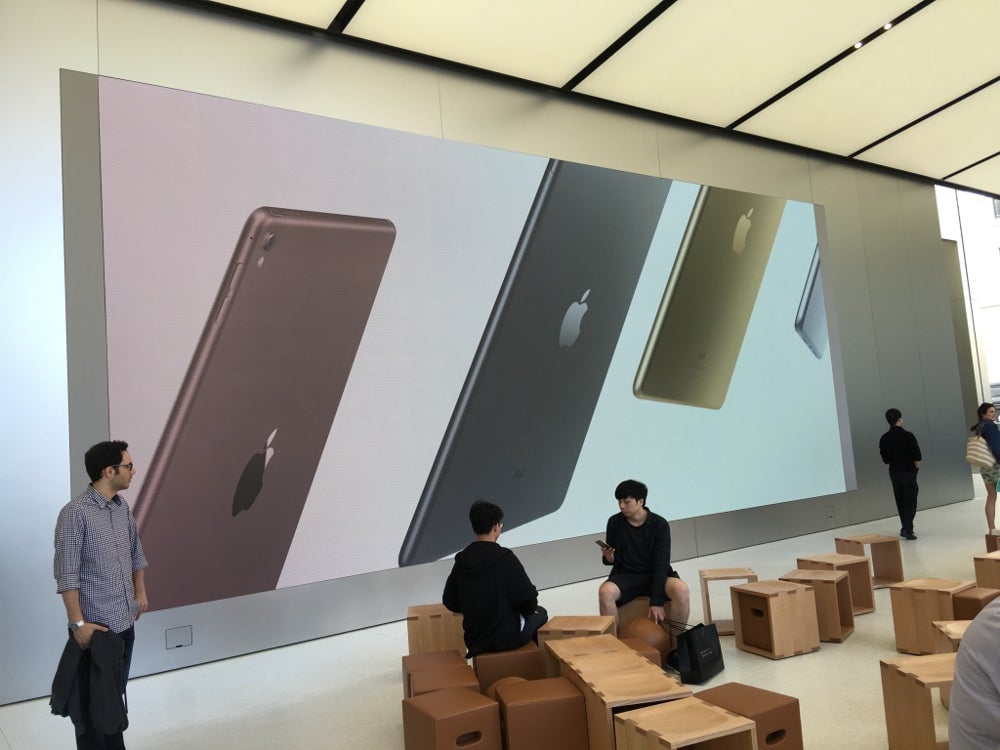
…and the ingenious dimpled wood stools, nested leather seat, and matching medicine ball:
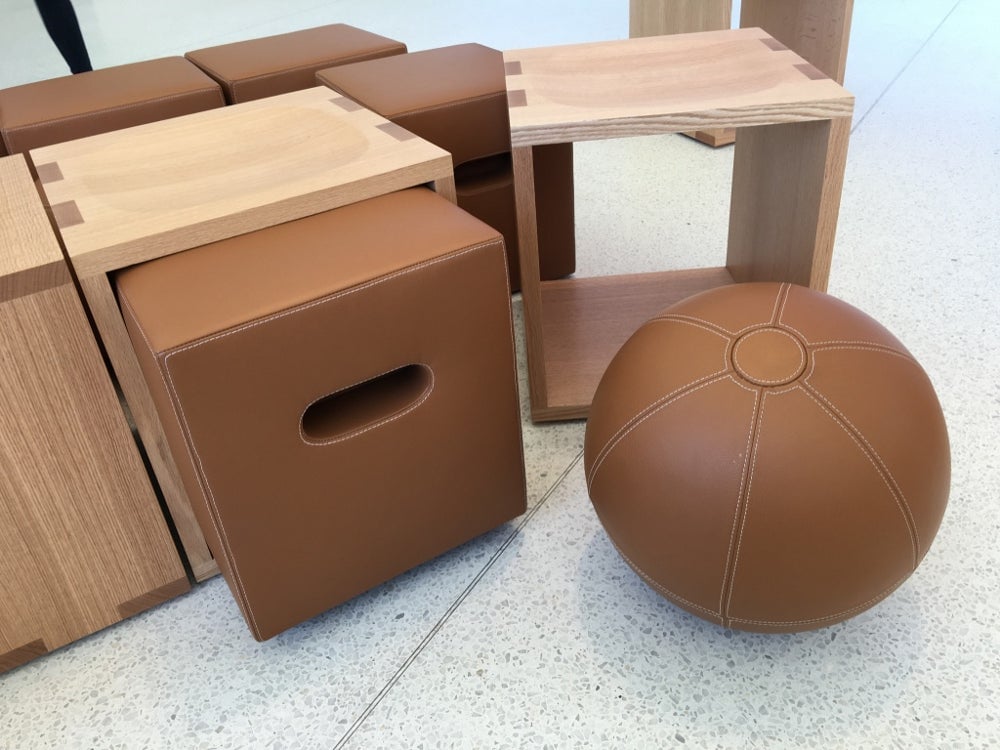
(For much, much more, The Verge provides a detailed guided tour of the new store. So does iMore.)
Warmer and less “mineral” than the stark minimalism of previous Apple Stores, my spouse sees touches of Angela Ahrendts’ Burberry past. Dame Angela joined Apple two years ago and, for the most part, stayed out of the limelight. She’s visible to store employees, though, via regular video messages and in-person visits. Liked and respected, avoiding the rash moves that sunk her predecessor, she’s now affixed her signature on Apple.
The softer ambiance also helps with the Apple Store’s notorious acoustics: When the new Palo Alto store opened in the fall of 2012, the hard glass, tile, and metal surfaces coupled with the elongated shape conspired to make the back of the store louder (85 decibels) than University Avenue traffic outside. No such problem in the new store, even on the very busy opening day.
This being an Apple event, critics didn’t miss an opportunity to mention “the absurd lengths Apple is willing to go to design real-world retail destinations,” that “Apple’s stores have gone from serious to absurd in 15 years” or, “as a long term user and shareholder I see this as an onanistic exercise.”
Seriously, this is a business run by serious adults. They make mistakes, but this isn’t one of them. This is a retail chain that has defied conventional wisdom (“Sorry Steve: Here’s Why Apple Stores Won’t Work“), broken all revenue-per-square-foot records and become an icon, envied and copied. The new site (preceded by a smaller implementation of the new design in Brussels) sends a clear message:
This is what we think of ourselves.This is what we think of our customers.
An important component of this message is Apple’s relationship with fashion.
Apple’s aesthetic bent isn’t new. From its inception, the company has been derided as too preoccupied with elegance and style. The stereotype, admittedly faded today, was that blue-blooded individuals and corporations used PCs; pretty, stylish Macs were for effete types. When Macs moved to x86 processors, the dig was that a MacBook was just an Intel laptop in a pretty box.
Throughout its history and especially in the Apple 2.0 years after Steve Jobs’s return, there was a constant effort to make the Mac line not just more functional but also more aesthetically pleasing, more gratifying to its customers. The Mac captured a facet of our fascination with cars: They’re not built merely for function—a car is more than a carriage on four round, black tires—they’re machines designed for you to be seen driving them.
Where the Mac became a status symbol in its day, the iPhone took the relationship a step further: It was a fashion statement. Apple managed to make the iPhone an “aspirational” product, one you graduate to. Not for everyone, of course: Thank heaven there are humans who don’t fall for the silliness of fashionable allure, who dress, eat, drive, and dwell only in the most rational, objective manner (which is its own type of fashion).
If there was any doubt about Apple’s direction, the Apple Watch launch clinches the deal: Sir Jony schmoozes with Vogue Magazine czarina Anna Wintour and Karl Lagerfeld, the erudite designer (and serious geek: In 2007, before the 2008 App Store, Lagerfeld’s Chanel couture brand had a very good iPhone app, still updated). The Watch’s rose gold color is soon passed on to the latest iPhones and MacBooks.
Turn for a moment to Bernard Arnault’s LVMH fashion empire. While its revenue is small compared to Apple (€35 billion [$39 billion] vs. $233 billion), LVMH’s has many more “destination” stores around the world (3860 vs. Apple’s 463); the Paris Champs Élysées location makes the San Francisco Apple Store look modest:
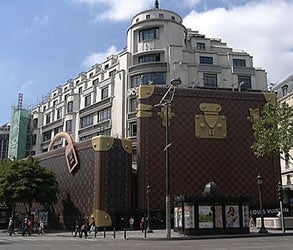
To be sure, Apple isn’t a fashion company like LVMH, but the company seems to have awakened to another way to Think Different.
Other tech companies have flirted with fashion. Believe it or not, Microsoft once offered a mouse that was designed by Philip Starck:

That effort didn’t last long. The application of designer lipstick betrayed a lack of sincerity and depth. Unlike Apple, it’s not in Microsoft’s DNA.
The Apple Watch’s association with Hermès, on the other hand, doesn’t appear to be mere designer lipstick. It’s the realization—by both companies—that a watch is the mutual affection of technology and fashion rolled into one object. This, in a nutshell, is what I surmise Apple thinks of its future, and what the new Apple Store design tells us: The company’s future lies at the intersection of technology and fashion.
In the most materialistic of business model terms, fashionable goods attain higher margins. But becoming fashionable doesn’t happen by fiat. It’s a mystery, a retroactively obvious achievement for which there is no recipe.
Before we part company for today, let’s walk to a retail establishment—from Macy’s to Starbucks, McDonalds and Costco—and consider their message:
This is what we think of ourselves.This is what we think of our customers.
Much food for thought…
This post originally appeared at Monday Note.